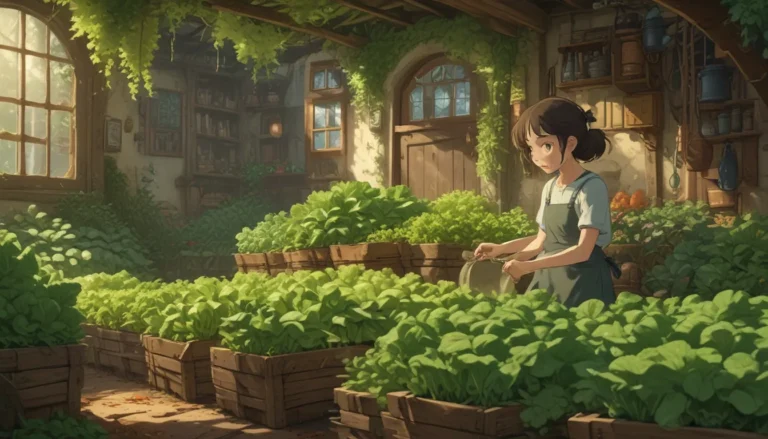The Ultimate Guide on How to Propagate Camellias

Camellias have a rich history, dating back thousands of years. These plants have adorned the gardens of nobility and ancient temples, making them not only beautiful additions to your garden but also carriers of history. With thousands of known varieties, camellias offer a vast array of colors and forms.
If you’re looking to duplicate your camellia plant for various reasons such as starting a tea garden or creating a flowering hedge, you can easily propagate them at home. But the challenge lies in choosing the right method. Let’s explore the various propagation techniques to help you decide the best approach for your needs.
What You’ll Discover
- Which Method Is Best? – Camellia Propagation Methods
- From Seed
- From Cuttings
- From Seedlings/Volunteers
- Grafted Rootstock
- Layering
- Air Layering
- Propagation Tips
Which Method Is Best?
Choosing the right propagation method is crucial to achieve your desired results. While growing camellias from seed can be a fascinating experience with endless possibilities, it may not ensure replication of the parent plant’s characteristics.
For consistent results, propagating through grafting is preferred. This process involves matching a cutting with desired traits to a hardy rootstock, ensuring the preservation of specific features. Grafting is ideal for maintaining the unique traits of camellias, roses, and fruit trees.
Observing callusing along the trunk can indicate if your plant has been grafted. Mature plant grafts might not be as evident, but a noticeable ridge or seam near the base signifies a grafted plant.
To preserve the qualities of the parent plant, consider methods like rooting cuttings, layering, air layering, or grafting. These techniques will help maintain the original characteristics and ensure successful propagation.
Now, let’s delve into the top six propagation methods for camellias.
Camellia Propagation Methods
When it comes to propagating camellias, some tried and true methods yield the best results. Let’s explore these techniques commonly used by growers and home gardeners.
From Seed
Growing camellias from seed is an exciting prospect if you’re curious about exploring unique varieties. While plant seeds offer infinite possibilities, keep in mind that seed-grown plants may not resemble the parent plant.
During late winter and spring, collect ripe seed pods from your camellia plant. Handle the seeds with care, ensuring they remain viable for planting. Scarify the seeds, soak them, and plant them in a suitable medium for germination.
Provide optimal conditions for germination, ensuring the soil is kept moist but not saturated. Camellia seedlings can also be directly sown in the ground for natural growth.
From Cuttings
Propagating camellias from cuttings is a quick way to replicate specific plant traits. Select healthy cuttings with new growth, remove lower leaves, and treat them with rooting hormone for successful root development.
Plant the cuttings in a well-draining medium, mist frequently to maintain moisture, and provide indirect sunlight for growth. Once rooted, transplant the cuttings to their permanent location for further development.
From Seedlings/Volunteers
Volunteer seedlings that sprout near the parent plant can be carefully transplanted to a new site or container. Handle the seedlings gently, ensuring the taproots are not damaged during transplantation.
Prepare the soil and container with adequate drainage for healthy growth. Trim the taproot if planting in a container to promote a fibrous root system suitable for container growth.
Grafted Rootstock
Grafting camellias provides a reliable method for replicating specific plant characteristics. Choose a healthy rootstock plant and scion with desired traits for successful grafting.
Secure the scion to the rootstock, ensuring the cambium layers align for effective union. Maintain optimal conditions for callusing and root development before transplanting the grafted plant.
Additional Propagation Techniques: Layering and Air Layering
Layering
Layering is an easy propagation method that encourages roots to form on a branch while it is still attached to the parent plant. This technique is ideal for replicating the parent plant’s growing conditions, ensuring successful root development.
Select a healthy branch, make appropriate incisions, apply rooting hormone, and secure the branch to the ground for root formation. Once rooted, separate the branch from the parent plant and transplant to a new location for continued growth.
Air Layering
Air layering is a variation of the layering technique that promotes root development in a branch while maintaining the connection to the parent plant. Prepare the branch, apply rooting hormone, and enclose the branch with a moist medium for root formation.
Check periodically for root development and transplant the branch to a suitable site once roots are established. Provide the necessary conditions for growth and ensure the roots are not buried too deeply.
Helpful Propagation Tips
- Choose the appropriate propagation method based on desired results.
- Ensure proper moisture levels for successful root development.
- Allow sufficient time for root formation before transplanting for optimal growth.
Whether you aim to create a vibrant hedgerow or a tea garden from a single healthy plant, propagating camellias offers a rewarding experience. By utilizing these propagation techniques, you can transform your garden with unique camellia varieties suited to your preferences.
Have you experimented with camellia propagation methods? Share your insights in the comments below!
For more guidance on caring for camellias, explore these informative articles to enhance your camellia gardening experience:
– Troubleshooting Tips for Growing Camellias in Containers
– 11 of the Most Beautiful Camellia Varieties to Grow at Home
– How to Protect Camellias from Winter Cold Damage
– Why Are There Ants On My Camellia Flowers?
Remember, with proper propagation techniques, you can add a touch of elegance to your garden with beautiful camellia plants.





